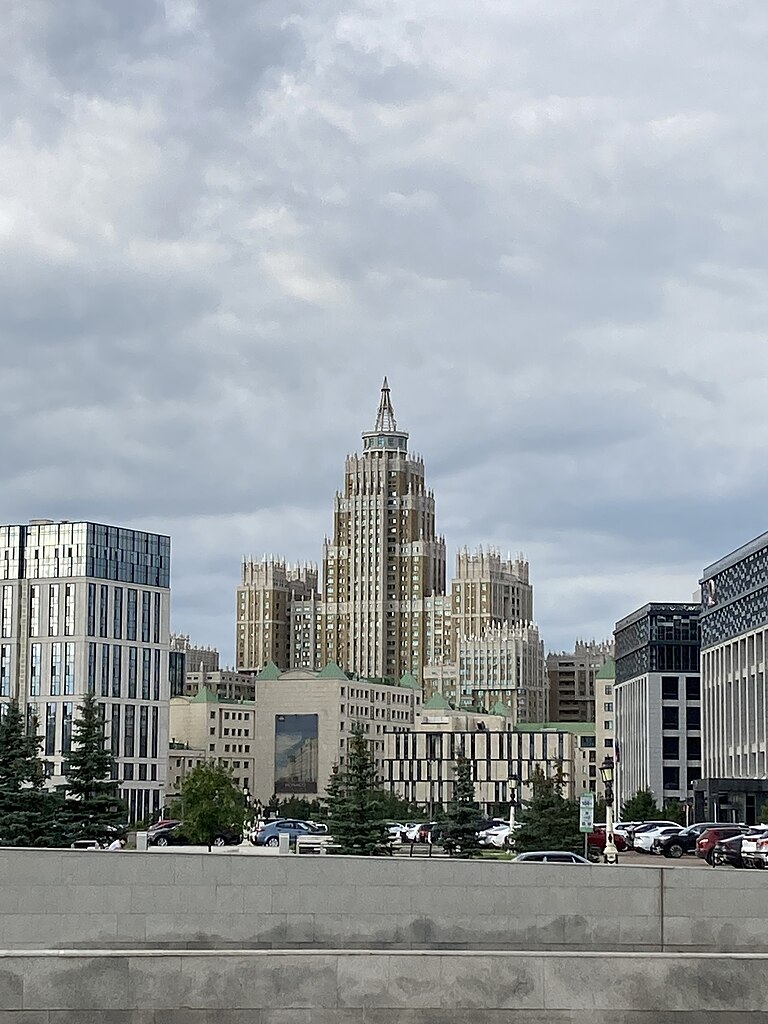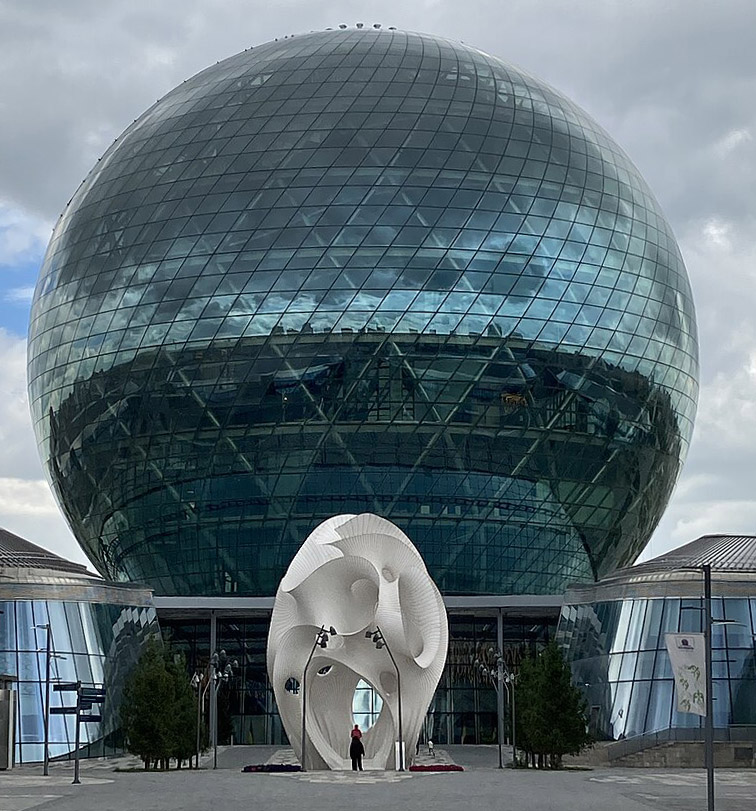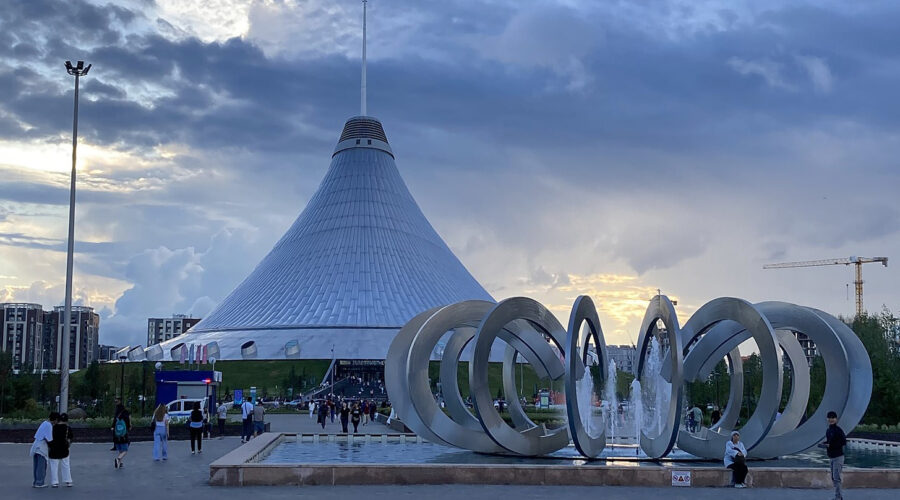For political and economic reasons, Kazakh authorities decided in 1997 to relocate the capital from Almaty to Akmola, which was consequently renamed Astana in 1998. At the time, only around 270,000 people lived in the city. In 2024, Astana’s population is estimated at 1,3 million.

As a result of the former Kazakh President Nursultan Nazarbayev’s decision, the brand new city was built in the steppe in the middle of nowhere. Astana is now a futuristic, ultra-modern place with extremely broad avenues, high-rise buildings, and interesting landmarks.
Even though Kazakhstan has been part of the Soviet Union for 55 years, there are very few Soviet commie blocks (large apartment complexes) in Astana. Most buildings are new, including the 142-metre (466 ft) Triumph of Astana tower, modeled after the Seven Sisters in Moscow designed in the Stalinist style.
“Astana is a mixture of Pyongyang and Seoul”, a South Korean journalist told me as we walked the incredibly clean streets of the former Soviet republic’s capital on the way to the traditional Kazakh restaurant where we were served dishes consisting of horse meat.
On the way back to the hotel, one of our colleagues took a taxi – possibly the easiest way of transportation in Astana. And it is very cheap. For less than $4 one can go from one part of the city to another. The problem, however, is that it is very difficult for foreigners to order a cab. The only way to do so is to install an app (the Russian YandexGo seems to be the most popular one), and book a vehicle online.
Besides taxis, the public transportation system in Astana consists of buses. A bus card can be purchased at ticket vending machines, but to add money to the card, you have to use a local app. In a Kazakh highly digitalized society, living without smart phones and apps is virtually impossible. Also, paying with cash is not a very common thing in the largest Central Asian country that aims to attract tourists from all over the world.
Presently, according to the Kazakh Vice Minister for Tourism and Sports Yerzhan Yerkinbayev, Russia is Kazakhstan’s biggest feeder market, although the number of Chinese and Indian tourists visiting the former Soviet republic constantly grows.
“Kazakhstan has become a leading destination for Indian travelers. Many of them are coming here for shopping”, Yerkinbayev told me, emphasizing that Kazakhstan remains an undiscovered country for Europeans.
The reason for that could be expensive flight tickets to the Central Asian nation. But Yerkinbayev believes that that will change, as the Kazakh authorities have reportedly decided to liberalize the air transportation market. They have already abolished the visa regime for 83 countries, and now they plan to develop tourism on the Kazakh Caspian Sea shore.
“We’re building resorts there, and some international hotel chains are also coming. We expect to have many guests from Iran and Russia in the future”, the Kazakh official stressed.
But how much would they have to pay if they plan to spend their vacation on the Caspian Sea?
“Me, my wife, and our two children have paid slightly less than $1000 for a ten-day vacation in an all-inclusive resort. But many Kazakhs complain that it is still more expensive than flying to Turkey or Egypt and staying at their resorts,” Yerkinbayev conceded.
Kazakh authorities will, therefore, have to work hard to become more competitive and to attract more tourists, not only to the Caspian Sea but to other parts of the 9th largest country in the world as well.

In Astana, foreigners usually come for business and politics rather than for tourism, even though the city has a lot to offer: from the 97-meter Bayterek Tower with its panoramic view to the Kazakh capital, through the Future Energy Museum, National Museum, the largest mosque in Central Asia in terms of capacity, to the Palace of Peace and Reconciliation, and the Khan Shatyr shopping center.
But what makes the Kazakh capital unique is that, despite having several impressive squares with large monuments, it does not seem to have a city center, or at least a particular central area that has a lot of culture, shops, and nightlife. All that can be found in most, if not all, parts of Astana. As a result, wherever in the Kazakh capital you are, you are unlikely to feel like you are in the city center.
Possibly the only place that looks different from the rest of the city is the Ishim River Embankment, where dozens of participants of the carnival took part in the Astana Day celebration on July 6, while musicians wearing traditional Kazakh clothes played the Kazakh songs in every shopping mall in the city. But there was one thing missing – foreign tourists.
Although Astana is far from being the most exciting place in the world, it definitely deserves to have more visitors.
Images: Nikola Mikovic

